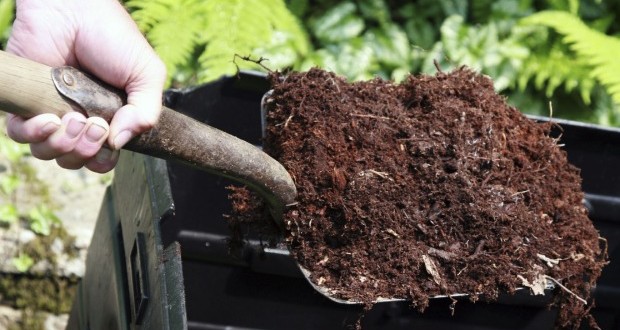The annual use of the site for the cultivation of various crops greatly depletes the soil. To restore its fertility is required periodically fertilizer. One of the most affordable types of food that has a rich nutrient composition is compost. Such fertilizer can be made in the country with their own hands.
Table of contents
What is compost
Compost is a type of organic fertilizer that is available to be harvested on its own using various household and plant waste. High-quality composition containing minerals and valuable trace elements, is equal to humus. Nutrient mixture reaches readiness as a result of decomposition of organic substances under the influence of heat and moisture. The compost pile is identified with a living biological reactor. The process of converting waste into a valuable nutritional product is due to the rapidly developing microorganisms.
Compost preparation is not a time consuming process, but the technology still has some features. Only the right composition is able to restore the vitality of the soil, increase its fertility and improve the structure. Recipes and methods of harvesting organic fertilizer are plentiful. Each experienced gardener has his own exclusive secrets, which consist in the use of various additives, the combination of certain components, etc.
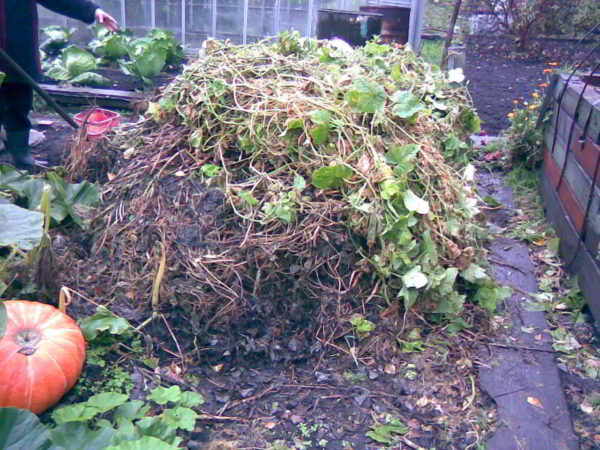
What is made of
Whatever the tempting offers to purchase the finished compost, you can only completely trust the self-prepared product. For organic fertilizer, you can use:
- waste and cleaning vegetables / fruits;
- egg shells (only from eggs that have not undergone heat treatment);
- tea leaves, coffee grounds;
- mowed grass;
- dry leaves;
- peat;
- domestic animal dung, bird droppings;
- thin twigs, stems;
- paper, natural fabrics, feathers (raw material in a crushed form);
- straw, shavings, husks from seeds.
All or part of the ingredients are filled in a box or pit in a certain order. To start the fermentation process, it is necessary to create a favorable temperature and high humidity.
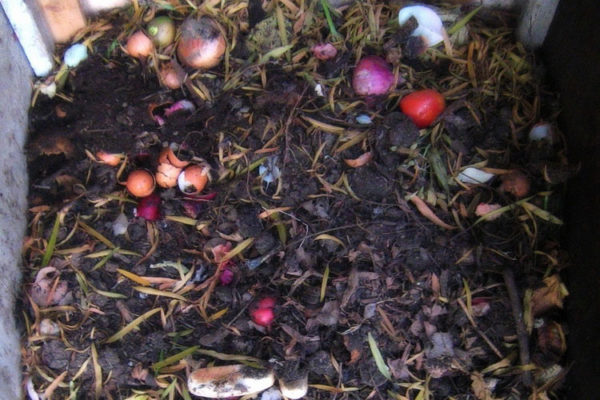
The following ingredients must not be put into the composter or pit:
- vegetable waste and fruit, heat treated (there are practically no useful trace elements in them, the composition will be non-nutritional);
- weed grass (all types of weeds contain toxic or toxic substances that are hazardous to the soil and crops);
- plants affected by any diseases or pests (compost with this component provokes the spread of the disease on the soil and plants);
- synthetic material (it is not subject to the process of decomposition and rotting);
- citrus waste (essential oils inhibit decomposition, a large number of crusts can increase the acidity of the soil).
Advantages and disadvantages
To appreciate the full benefits of using compost, you need to consider its effect on the soil environment and plants.
- Compost contains a large amount of valuable minerals and trace elements in the right proportion. When released into the soil, a rapid exchange process occurs, as a result of which the deficiency of the missing substances is instantly compensated.
- Organic matter when combined with the soil form a single structure. After heavy irrigation or rain, micronutrients remain on the surface, in contrast to mineral fertilizers, which are deposited in the deeper layers of the soil.
- Compost is breathable and airy, which allows it to improve the structure of the soil in the upper layers. This is important for the normal development of the root system.
- The composition of the fertilizer includes a large amount of humuswhich enhances the fertility of the land.
- Overfeeding plants with organic matter is almost impossible. All components are of natural origin. They undergo natural decay processes without contaminating the soil with various toxins.
- Organic compost fertilizer is the most affordable way to enrich the soil with nutrients.
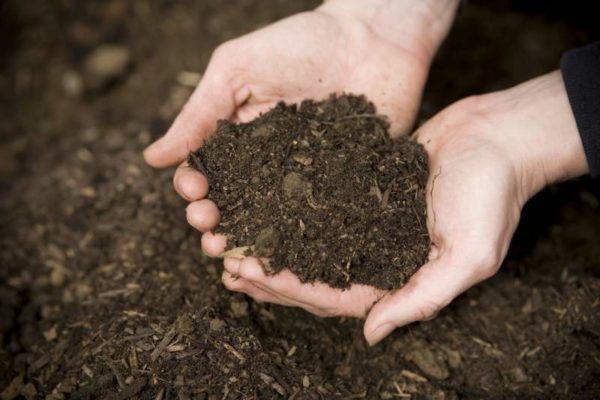
Compost has practically no disadvantages. However, it is worth noting that when arranging a compost pile or pit, you need to choose a place away from the recreation area and at home, since the process of decay is accompanied by the release of an unpleasant smell. In addition, this object attracts flies, ants and other insects. Arrangement of a special box, which is equipped with doors, will help to avoid problems with such a neighborhood. Insulating a compost pile in this way also has aesthetic value, a corner of the plot will not look dull.
How to make a compost box with your own hands
To organize the collection of organic waste in order to obtain fertilizer is recommended to use a compost box. It is completely easy to make a repository by following simple rules.
Site design requirements
To make the container to meet all requirements, it’s important to take into account when assembling it:
- side walls should have openings that allow air to circulate (2 cm clearance can be left between the boards);
- there is no such element as the bottom in the box;
- the presence of a lid will limit the flow of water during heavy rains (excessive moisture will provoke the development of fungus);
- the lower part of the box must be opening to ensure the fertilizer intake (the composition matures faster from the bottom).
Materials for the manufacture of organic fertilizers
For the manufacture of the compost box are selected bars and boards. You can also use wooden shields. Instead of a wooden cover, a frame upholstered with polyethylene film or polycarbonate is often used. Fixing of individual elements of the container is carried out by hardware and loops (unlocking fragments).
Instructions for making
- To clear the place for vegetable garbage under the compost box and remove the turf layer. Perform markup on the drawing.
- Dig holes in the corners of a depth of 35-50 cm for the installation of supports.
- Install the supports in the pits, align them vertically and fill them with gravel to half the depth. The remaining part of the ground surface is poured with cement.
- After 1-2 days after the cement hardens, fill the cement fill with earth.
- Connect the supports along the top and bottom with bars (on 4 sides).
- Sheathe boards around the perimeter of the frame, leaving gaps of 2 cm for air access. On one side or on both sides of the bottom, you need to attach the board to the hinges so that it can open to collect fertilizer.
- To equip the top with a unlocking lid, knocked out of several boards without gaps.
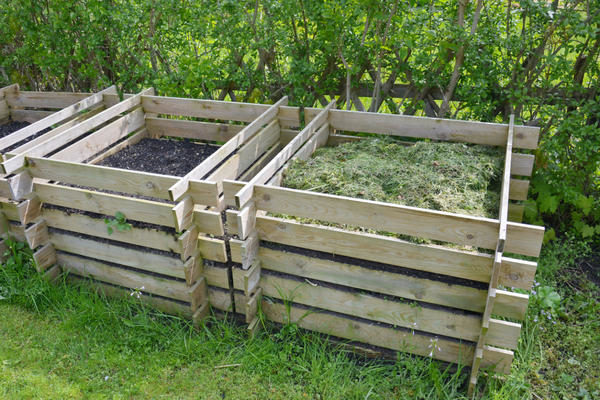
How to make a compost pile
As an option to cook in one of the nooks of the plot a compost pile. A heap does not mean an indiscriminate landfill, but a systematic collection of organic waste. The place is better to choose in the shade, the components will dry out in the sun. Shady shelter provides the necessary moisture, which favorably affects the process of decay. Worms, woodlice and other microorganisms also contribute to the decomposition.
Correct materials
For compost pile You will need peat (as a litter) and an organic bookmark, including:
- crushed branches and stems of plants;
- kitchen waste;
- fine paper and cloth scraps;
- hay, straw;
- manure, etc.
For the improvement of the heap around the perimeter planted beans or ornamental shrubs. You can also protect the area with a low fence.
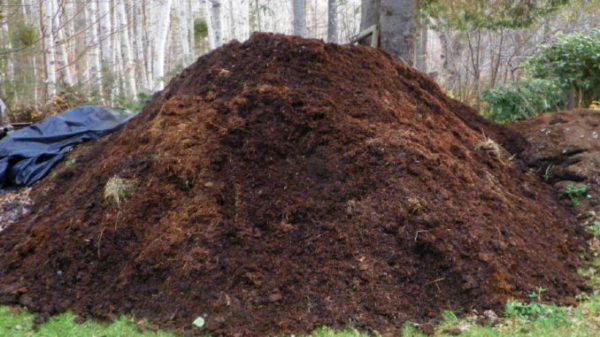
Cooking technology in the country
Arrangement of compost heaps can be done at any time of the year, except for winter. To do this, in a selected area, remove a layer of soil of about 20 cm and fill the resulting excavation with peat (a layer of at least 10 cm). Peat pillow will cope with insulation that prevents leakage of nutrients, no worse than roofing or polyethylene. Next, lay down all the components in layers
It is impossible to randomly dump all organic garbage, the fermentation process may not develop, or the ingredients will simply rot and become covered in fungus. Layers lay in such a way that wet components alternate with dry ones. The thickness of green plants should be within 20 cm, manure and bone meal - 5 cm, household waste - 15 cm.
Properly equipped heap in total contains up to 70% of plant residues, up to 10% of the soil, up to 20% of manure or other organic matter. Some gardeners recommend each layer to be covered with spheres of fertile earth (5-7 cm thick). The top is covered with straw or hay, pre-watered a bunch of hot solution based on bird droppings or manure.
Aging
Organic bookmark matures on average 8 months. Any gardener admits that this is too long, therefore, the output is found in a phased arrangement of several compost pits or the use of special preparations, which, thanks to bacteria, speed up the decomposition process. Also compost ripening is possible. in bags.
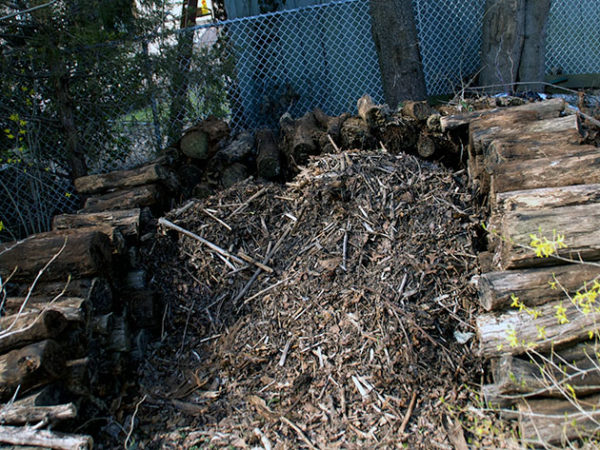
Such means are made on the basis of natural components; they will not be able to cause harm to the soil or the plants. For example, the drug Ambico Compost (Gringo) provides fertilizer maturation in just 6-8 weeks.
How to determine if the compost is ready
Finished compost can be identified by the characteristic dark color of the composition. It should be crumbly, moist, not emitting a stench. Ripened fertilizer has the smell of forest land.
Observing the rules for composting, you can regularly replenish the nutrient mix for the garden with your own hands, without spending additional funds on the finished fertilizer.
